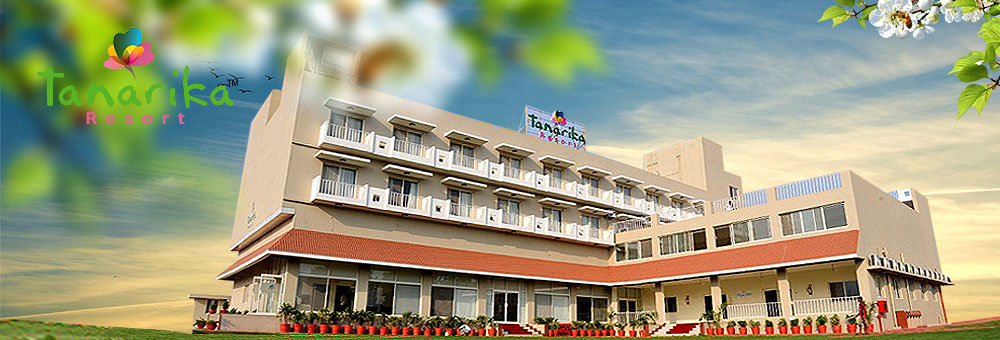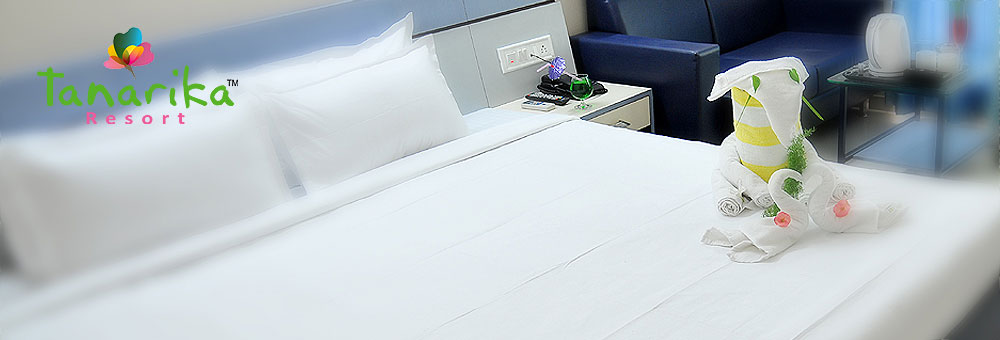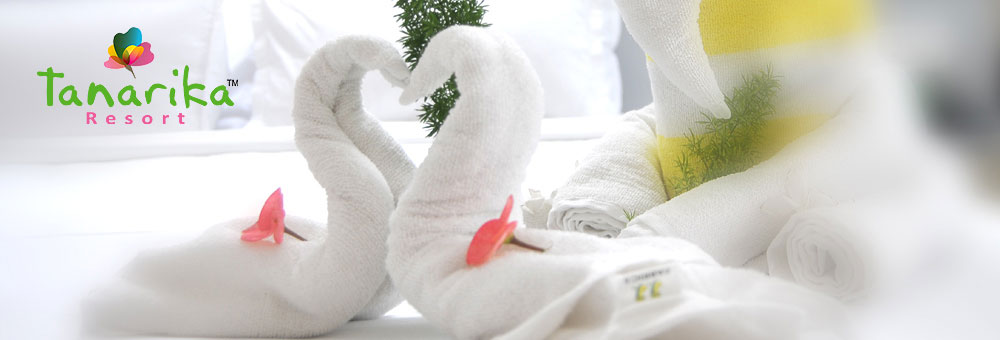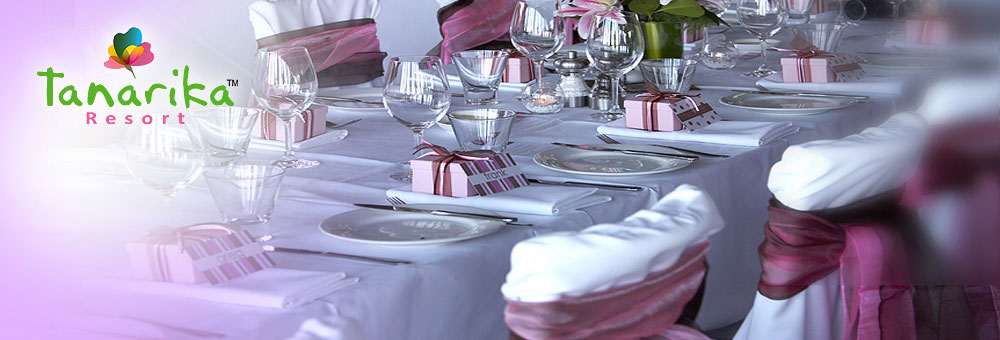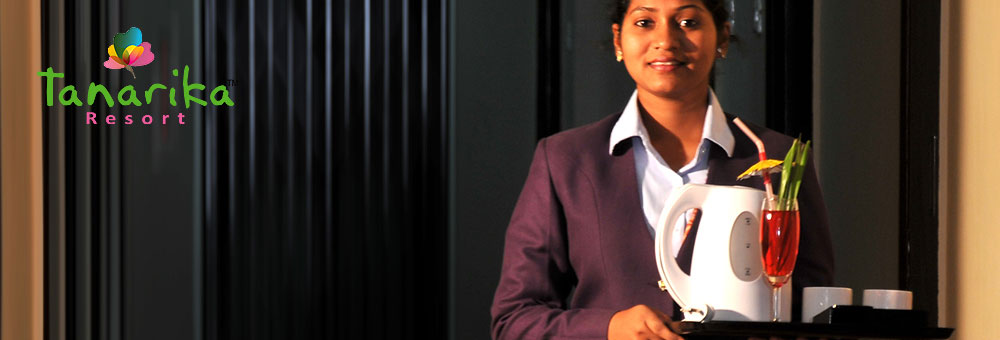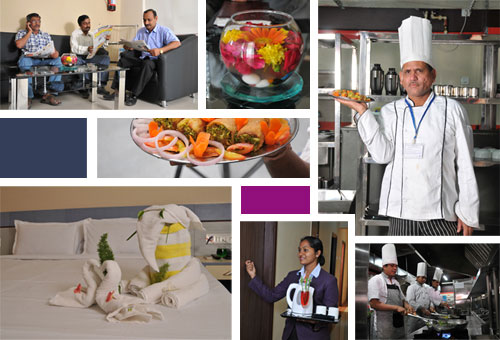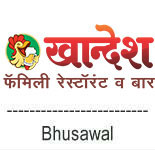|
Welcome To The World Of Tanarika Resort...
Ajanta Cave Hotels - Tanarika Resort is just 67.1 km 1 h 21 min away from Ajanta Caves via MH MSH 8 and Bhusawal Rd/Jamner - Bhusawal Rd. The Resort is best place to stay in the region.
Ajanta caves are located 99-km away from Aurangabad district in the state of Maharashtra. Ajanta caves were carved out from the 2nd century BC to 6th century AD, and are ranked high as a world heritage site.
They were hidden in the midst of a lonely glen with a streamlet flowing down below. They were scooped out into the heart of the rock so that the pious Buddhist monk could dwell and pray. During this time, images of Buddha interpreting his different life stories and several types of human and animal figures were carved out of rock.
All sections of people of the contemporary society from kings to slaves, women, men and children are seen in the Ajanta murals interwoven with flowers, plants, fruits, birds and beasts. There are also the figures of Yakshas, Kinneras (half human and half bird) Gandharvas (divine musicians), Apsaras (heavenly dancers), which were of concern to the people of that time. The Ajanta caves are dedicated solely to Buddhism.
The caves, including unfinished are thirty in number of which five (9, 10, 19, 26 and 29) are Chaitya-Grihas and the rest are Sangharamas or Viharas (monasteries). The caves L, 2, 16 and 17 can be ranked high among the greatest artistic works of the contemporary world.
The 30 Chaityas and Viharas have paintings, which illustrate the life and incarnations of Buddha. The artist has lent his creativity in each work with an overwhelming sense of vitality. These paintings have survived time and till date the numerous paintings glowing on the walls make the astrosphere very vibrant and alive.
Ajanta Cave 1: Cave 1 is one of the finest examples of vihara architecture evolved towards the end of fifth century. The facade is lavishly ornamented, its beauty enhanced by six richly carved columns on the verandah. Their shafts are adorned with tracery-work and the bracket capitals have flying figures. The ornate doorway leaps into a big hall, 19.5 meter (64 ft.). On these sides there are rows of cells. Beyond the ante-chamber facing the entrance is huge Buddha image grouped with the master’s first five disciples and others. One central pillar in the right row has a curious carving done with remarkable realism; four deer in different positions have a single head which seems to belong to each one. The entire wall space and ceiling as also the pillars in the cave had once been painted. Much of the work has peeled off, but enough of great value has survived. This includes a few masterpieces.
The paintings mainly illustrate Jataka, stories. A typical one, at the left of the main entrance, has been identified with Sibi Jataka. The story goes that a pigeon, chased by a hawk, sought the protection of king Sibi, who was a Bodhisattva. The hawk came in pursuit and demanded its lawful prey. King Sibi struck bargain to save the little bird’s life. He gave the hawk a measure of his own flesh equal to the bird’s weight. The pigeon is seen there in the king’s lap (extreme left) and beyond a pavilion the king stands by a pair of scales (right). The side-walls of the antechamber present remarkable scenes from the Buddha’s life in large-scale compositions. The one at the left visualizes a moment when Gautam, at the end of seven years of seeking, was about to attain Enlightenment. Even since the time he had left his palace and taken to the ascetic’s life Mara, the Evil one, had been at his heels. “Turn back”, Mara had bidden, “the jewel wheel of empire will be yours”. Since Gautam scorned the prospect, Mara had made the threat. “Whenever you have a bad thought I shall know”. For seven years, Mara had followed Gautam like his shadow and when it appeared that the supreme moment was near, Mara, in alarm made one more bid. He let loose the force of seduction, his own beautiful daughters disporting themselves before the ascetic.
The composition on the right wall is the “Miracle of Sravasti”. Here the Buddha has turned himself into hundreds of Buddha’s in different attitudes.
The wall of the back corridor, to the left and right of the ante-chamber, contains two majestic Bodhisattvas which are among the Ajanta masterpieces. The one to the left is Padmapani. His eyes are lowered meditatively: his face has depths of spiritual calm born of compassion for all living forms. This great picture has fascinated the art-critics of many countries. Beside the Bodhisattva is his attractive wife, a dark beauty who had featured often in Ajanta reproductions. The left corner of the composition has divine figures and at the right, monkeys and peacocks are seen joyous-frolic.
The other Bodhisattvas, Vajrapani, are richly bejeweled. He leans gracefully against an attendant. A king offers him flowers. At the bottom are two dark women, and thought the paint has largely peeled off the delicacy of treatment is obvious.
Ajanta Cave 2: Cave 2 is somewhat alike in plan to cave 1. The verandah has a lovely painted ceiling. Among the excellent murals, one on the left wall of the hall, near the third cell-door, dramatizes the legend of the Buddhas birth with some vivid panels. In the panel above the cell door the Bodhisattva is seen in one of the heavens. He has already passed through a cycle of birth and rebirth on earth and now that he will have to be born for the last time he selects the place of his ultimate mission. It is to be a place in India close to the Himalayan reign, and queen Maya is to be his mother.
Maya has a strange dream (bottom left panel, this is badly damaged). While she sleeps in her bed chamber, a white elephant above the dream (the last panel above). The Brahmans at the royal court are invited to interpret its meaning (panel to the right). Their predictions is that the queen is about to bear a son with the entire world for the ascetic life, he would become a Buddha. Maya, on her fathers place with her ladies-in-waiting, stops awhile at the lumbini garden and here the pains of childbirth come upon her and the nativity takes place (lower panel).The new born child walks to the east he says, I shall attain the highest release. As he walks southward he says, I shall be the first of all created beings. And finally, I shall cross the ocean of existence.
On the right wall of the front corridor a painting in a bad stage of preservation is recognized as a superb piece of work. It shows a king, sword in hand, about to punish women for some reason. The woman is on her knees, begging for mercy. Her attitude is full of pathos: there is pleading in every curve of her slender body, graceful rendered: the figures are eloquent: the clothes are disheveled, huddled on the floor. Here is a picture rich in feeling and with great beauty of form. The chapels on each side of the ante-chamber have good murals. The one to the right has female figures which have been compared by art ceiling like Axel Jarl to Botticellis Primavera. No less remarkable are perhaps the best. One of the ceiling-panels shows a procession of twenty-three geese rendered with great skill.
Ajanta Cave 4
Ajanta Caves 4 is the largest Vihara at Ajanta. The decorated main entrance leads to a hall with twenty-eight pillars. To the right of the door is the carving of a Bodhisattva to whom devotees are praying for deliverance from the eight fears. The figures in niches and door jambs are full of good sculptural details. A man and women are seen flying from a mad elephant. A women leans against a trunk with a playful squirrel. A man lured by a temptress looks helpless and lost.
Ajanta Cave 5
Ajanta Cave 5: after ascending some steps there are Shal Bhanjikays on both sides of the entrance gate.
Ajanta Cave 6
Ajanta Cave 6: is two storied, the only Vihara of its kind. The influence of domestic architecture is plainly suggested. There are numerous Buddha figures in varied studies.
Ajanta Cave 7
Ajanta Cave 7, the plan and the pillars of this cave of different style.
Ajanta Cave 8
Ajanta Cave 8, there is arrangement of electricity in this cave.
Ajanta Cave 9
Ajanta Cave 9, a chaitya-hall, is assigned to the first century B.C. Here are many themes and motifs from everyday life; for instance, the frieze of herdsmen running after cattles. The row of austre Buddha figures on the columns, the scene on the walls at the back, the fragments of painting over a window � these typical examples of Hinayana art stands in contrast to the vivacity of later times.
Ajanta Cave 10
Ajanta Cave 10 also is a prayer-hall and similar to cave 9, though it is much larger. An inscription on the front indicates its date as an early decade of second century B.C> this is the oldest of the chaityas, and possibly the earliest of all the Ajanta excavations. Of special interest are the examples of the ancient painting. The left wall opposite the third pillar shows a royal personage with a retinue of solder, dancers and musicians. The dresses, jewelry and coiffures of that remote period add to the interest of these pictures, even though are somewhat obscured by layers of deposit.
Ajanta Cave 11
Ajanta Cave 11, only few paintings are left in this cave.
Ajanta Cave 12
Ajanta Cave 12 the cave contains hinyan vihar, and on the three sides of the cave are living places for Buddhist Saints also beds made of stone are shown in this cave.
Ajanta Cave 13
Ajanta Cave 13 this cave is used by Indian Archaeological Department as their store.
Ajanta Cave 16: this point commands a good view of a river. Down the slope, the entrance gate is carved with an elephant on either side. Here the stairway leading to the river has survived in part. This could have been the original approach to the temples.
The architectural beauty of this cave temple makes it one of the most striking in the series. An inscription on the left end wall outside the verandah gives its history; a Minister of the royal court had it excavated as a gift for the best of ascetics. The date is late sixth century. The verandah has octagonal columns. The roof of the front aisle carries the contour of beams and rafters, an imitation of wooden construction of the time. The square windows for lighting the hall and the Buddha image make an architectural feature. Not many of the paintings have survived.
The nativity story started in cave 2 is continued here in number of panels on the right wall. Young Gautama goes to school and practices archery. He witnesses a ploughing contest and the sight of the tired toilers in the fields and the bleeding oxen throws into his first meditation about lifes realities, at the extreme right of the panel there is Maya Gautams mother, fast asleep, and the circular pavilion at its left shows: he royal couple possibly discussing the strange dream.
The masterpiece in the cave is painting next to the front plaster of the left wall, famed as the dying princess. There is agony in the drooping, sightless eyes, the helpless abandon of fingers, and the farewell gestures. The emotion of the attendant beside the princess is well expressed in their faces and attitudes.
The princess is possibly Sundari, the broken hearted wife of the Buddha half-brother Nanda, who left his palace and gave himself to monastic life. J. Griffiths has commented. For pathos and sentiment and the unmistakable way of telling its story, this picture, I consider, cannot be surpassed in the history of art, the Florentines could have put better drawing and the Venetians better color, but neither could have throws greater expression into it.
Ajanta Cave 17 is in its design very much like Cave 16, and belongs to the same, but it has in addition an ante-chamber. Its entrance, with the decorative panels and the female figures embellishing the corner projections, is considered to be a thing of supreme artistic value. This cave temple has the largest number of paintings in good condition and they include several outstanding ones. Murals decorate the walls and ceilings of the portico and the walls of the great hall and corridors. On the porticos left wall, there is the wheel of life depicting life in its different phases. This wheel is still a living symbol in Tibetan monasteries. The adjoin wall has an intimate posture in a place pavilion; the prince holds out a cup of wine to his wife. Then the two proceed to the city gate. There is a large grouping of many human types. The flying gandharvas and apsaras are fascinating in their sensitive lines and their true purity form.
A mural on the porticos right wall illustrates the subjugation of a charging elephant, one of the eight great miracles attributed to the Buddha. Devadatt a, the Buddhas jealous cousin, made three attempts the Great Ones life. When the first two failed, he set an enraged elephant against the Master. The beast as it came charging, stopped and prostrated itself in submission. Inside the cave, the front corridor, left, presents a famous Jataka story. The Bodhisattva was once born in the Himalayan region as an elephant, the chief of a herd of eight thousand. He had two wives and happened to offend one of them. With the prayer to be reborn as a fair maiden and to become the queen of Banaras (Varanasi), so that she could avenge herself, she pined away and died. Her wish was fulfilled. In her position of power, she commissioned a hunter to bring to her the tusks of chief of the herd. The hunter having hit the elephant with a poisoned arrow struggled in vain to saw off the huge tusks. The Bodhisattva himself came to the hunters aid, pulling of his tusks and offering them as a gift to the queen. At right of them queen was stuck with remorse and died heart-break. The theme of self-sacrifice recurs often in these jataka pictures. One that covers a great a part of the left wall is based on the same idea and it also depicts a figure of great cruelty. The story goes that: the bodhisattva, born as price Visyanara, had a cravibf to give in charity whatever he possessed. When he had parted with the state elephant, which had the magical power to bring rain, the people of the kingdom forced him into exile. With him in the chariot went his wife and two little children. On his way he made a gift of chariot horses. Now they had to go on foot. When another supplicant appeared and asked for the children. The prince gave them away as well. The painting which presents this theme is badly preserved; but the supplicants intention depriving the exiled prince of his last treasures makes a striking portrayal.
A large composing on the right wall is recognized as a great work of art. The story recounts Prince Simhala conquest of Ceylon. Shipwrecked, Simhala with his five hundred merchants was cast ashore on an island of ogresses who noticed them in the guise of beautiful women. Howell, amid the revelry, Simhala sensed danger and forthwith made his escape on the back of a flying white horse who was a Bodhisattva. One of the ogresses went in pursuit. Her beauty captivated the ruler of Simhalas homelands. He married her and was presently devoured by his spouse. Simhala rose to the occasion. He chased out the ogre and then led an expedition on the enchanted island where his men had perished. Conquest followed and the victor becomes the king of island. The sections of this painting threat treat realistically a line of boats ashore, a charming group of dancers, a procession of elephants and finally the coronation. This painting is a work of art of great worth for the ensemble of the grandiose composition. The pilaster next to this mural has an attractive toilet scene in which a young, self-absorbed woman holds a mirror before her face and beatifies herself. The back wall of the anti-chamber contains the excellent mother and Child before Buddha. The Masters return to his palace door, a begging bowl in his hand. The baby boy he had left is now seven year old. At his mothers bidding, young Rahula begs of the Buddha his rightful inheritance as a son. Havell wrote in its exquisite sentiment it is comparable with the wonderful Madonnas of Giovani Beliini Lawrence Binyon called this picture: One of the most unforgettable things in Ajanta, adding that no picture any-where more profoundly impressive in grandeur and in tenderness.
Ajanta Cave 18
Ajanta Cave 18 is the one of the smallest cave and water tank is kept over here.
Ajanta Cave19
Ajanta Cave19 is a chaitya-hall of the late Mahayana period, has an exquisitely carved faade with many large Buddha figures in relief. The great arched window ads to its grandeur. Boldly conceived and superbly executed in minute detail, this chapel is regarded as one of the best example of Buddhist art. With its large number of stone figures it has aptly been called, the sculptors treasure chest.
Ajanta Cave 20
Ajanta Cave 20 is again a good architectural study. The fights of steps here have a carved balustrade. The verandah pillars have capitals sculptures with attractive female studies.
Ajanta Cave 26 is almost as crowded with sculpture as cave 19, but this Chaitya-hall is larger in size. It has a colossal reclining Buddha figure representing Parinivana in a grouping of kings and queens and monks. The same wall presents a relief of the temptation of the Buddha. A theme seen in mural in Cave 1-on the left is Mara seated on an elephant and assaulting Gautam with his demon forces. On the right is Maras retreat. In the foreground his daughters are trying to tempt the Great Ascetic.
Presenting you the candid comfort at Tanarika Resort, Hotel Aaditya Palace & Hotel Premier!
|
